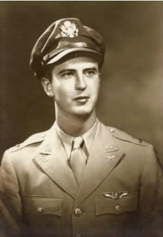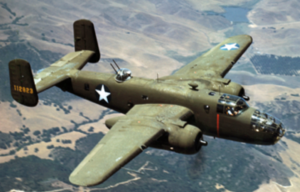Scroll of Honor – John Herman Lightsey, Jr.
An Excellent Account
John Herman Lightsey, Jr. couldn’t have had any idea what was in store for  him and the other boys of the Class of 1942 when they arrived on the Clemson College campus in the late summer of 1938. If Europe appeared to be on the precipice of war over Czechoslovakia, what concern was that to the new “Rats” sporting shaved heads and trying to survive the transition from rural high schools and farm life to the academic rigors of military school?
him and the other boys of the Class of 1942 when they arrived on the Clemson College campus in the late summer of 1938. If Europe appeared to be on the precipice of war over Czechoslovakia, what concern was that to the new “Rats” sporting shaved heads and trying to survive the transition from rural high schools and farm life to the academic rigors of military school?
“Pie” Lightsey was from the Hampton County community of Brunson and enrolled as an agricultural engineering major. Although his military record was undistinguished—he rose through the cadet ranks only as high as second lieutenant—Lightsey was nonetheless an active member of the Corps of Cadets. He was a four-year member of the track team and also competed as a member of the rifle team. He served as vice-president of the ABC Club, composed of cadets from Allendale, Barnwell and Hampton Counties, and marched with the Pershing Rifles drill team. He also completed ROTC training at Clemson in the summer of 1941.
Lightsey’s class was the first to graduate after the attack on Pearl Harbor thrust an unprepared America into a global war. Most of his classmates were soon in uniform and Lightsey found himself in the Army Air Force. After completing basic pilot training, Lightsey was ordered to multi-engine pilot training and assigned to fly bombers.
thrust an unprepared America into a global war. Most of his classmates were soon in uniform and Lightsey found himself in the Army Air Force. After completing basic pilot training, Lightsey was ordered to multi-engine pilot training and assigned to fly bombers.
Eventually assigned to the 380th Bomb Squadron of the 310 Bomb Group (Medium), by 1944 Lightsey was serving in the Mediterranean Theater as B-25 pilot. The B-25, made famous by the Doolittle Raid on Tokyo, was a twin-engine, medium bomber used to provide air support to front line troops and to attack transportation targets like road and rail bridges and harbors.
Operating from Ghisonsaccia Airdrome on the island of Corsica, west of the Italian mainland, the 380th flew missions to interdict German lines of communication and disrupt the movement of enemy forces. By June of 1944, the 380th’s official unit history reported, the squadron had reasons to be optimistic. Rome, the first of the Axis capitals to capitulate, had fallen on June 5. The long-anticipated invasion of France had begun on the sixth and the Red Army had kicked off its massive spring offensive in the east.
The weather at Ghisonsaccia had grown hotter, but it was still much cooler than the previous summer which had been passed flying from air bases in North Africa. There was little rain that June which meant that the squadron was flying missions practically every day. At this point in the war, most of the squadron’s missions were directed against bridges—both road and rail—as the Germans tried desperately to transport and supply their ground forces resisting the advances of the US Fifth and British Eighth Armies.
On Thursday, June 22, Lightsey was assigned to fly as copilot in a B-25 commanded by Lieutenant Frank Peterson. Their aircraft would be part of a small, three-plane formation targeting enemy shipping in Leghorn Harbor near Livorno, on the northwest coast of Italy. It would be a short flight for the  speedy B-25s which could cover the eighty-five miles to the harbor in less than twenty-five minutes.
speedy B-25s which could cover the eighty-five miles to the harbor in less than twenty-five minutes.
The three planes likely came in low over the water, making use of their forward mounted cannon and machine guns. According to the unit history, “Our planes gave an excellent account of themselves as several vessels in the Leghorn Harbor were sunk.” But the enemy could shoot too. “Heavy, intense, and very accurate” anti-aircraft fire was directed at the attacking planes.
Peterson’s and Lightsey’s B-25 was hit on the right wing by enemy flak. The right engine caught fire and the conflagration quickly spread, covering the entire right side of the aircraft. One parachute was seen coming from the plane which nosed over into a vertical dive and crashed into the sea. Lightsey and the other five members of the crew perished. One other aircraft from the formation was so badly damaged by enemy fire that it crashed into the Mediterranean Sea before it was able to reach its home base in Corsica. The trip to Leghorn brought Lightsey’s combat mission total to more than fifty. It was his thirteenth mission of the month.
First Lieutenant John Herman Lightsey, Jr. was awarded the Air Medal with two oak leaf clusters in a posthumous ceremony at Hunter Field, Georgia in December 1945, three months after the end of the war he had helped to win.
Lightsey was survived by his parents and two sisters and is memorialized at the Florence American Military Cemetery, Via Cassia, Italy.
For more information about First Lieutenant John Herman Lightsey, Jr. see:
https://soh.alumni.clemson.edu/scroll/john-herman-lightsey-jr/
For additional information about Clemson University’s Scroll of Honor visit:
